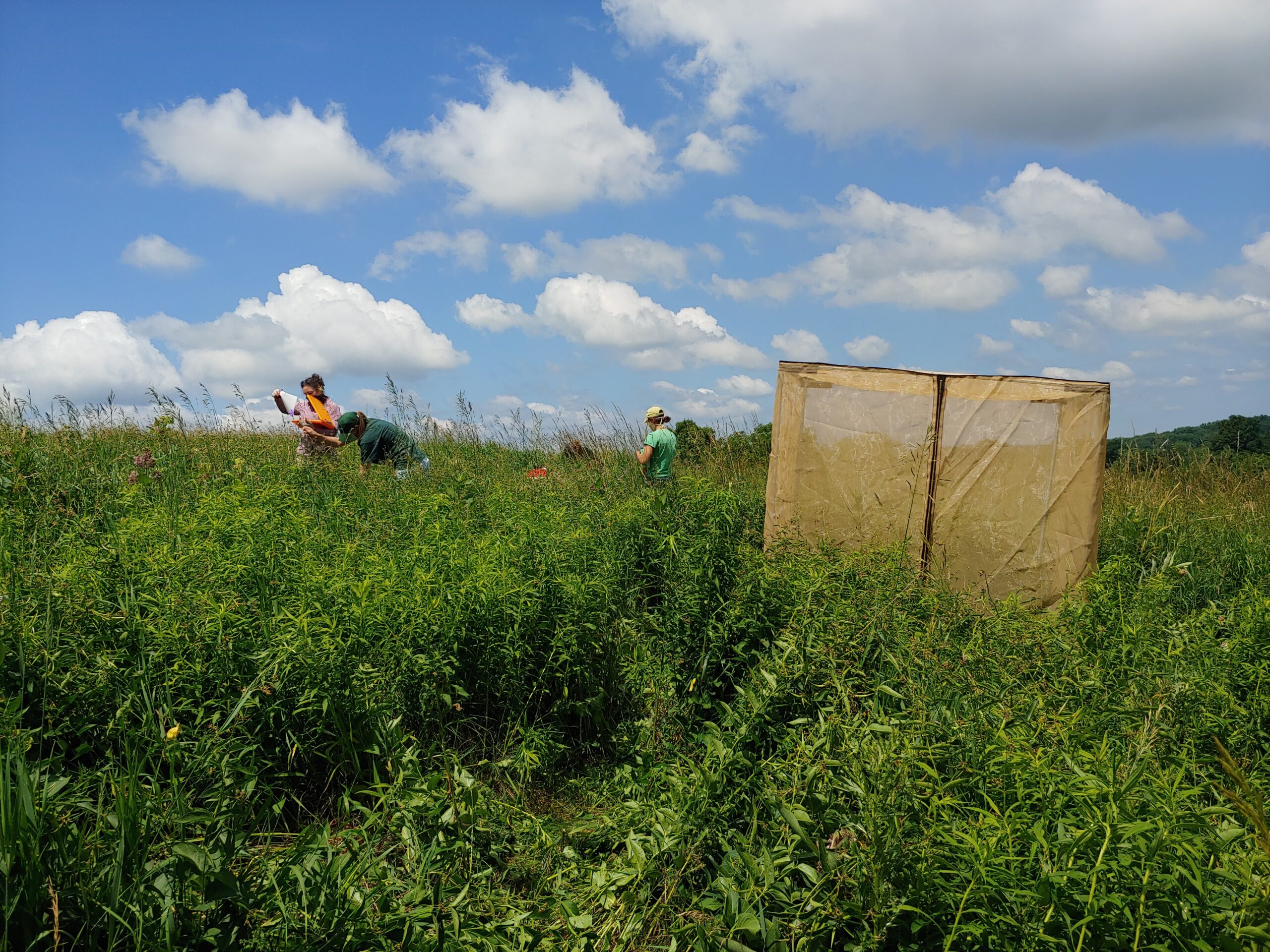
New York Invasive Species Research Institute
Swallow-wort Biocontrol Research & Outreach
The invasive vine
Swallow-wort (Vincetoxicum rossicum and V. nigrum) is an invasive vine from Europe that is well established in New York, overgrowing native plants and resisting management actions. Because swallow-wort is highly abundant and difficult to control by traditional methods, this makes it a prime candidate for biological control: a management method that uses an insect from the invasive plant’s home range to control the plant in areas where it is invasive.
Moth to the rescue
The theory behind biological control, or biocontrol, is simple: invasive plants may succeed in new places because they escaped the natural home enemies that would otherwise keep their numbers in check. To recreate those effects where the plant is invasive, introducing a carefully selected insect from the plant’s home, after years of safety testing, can be the most cost-effective, long-term solution for controlling invasive plants, especially those which are extremely prolific and persistent. (learn more about biocontrol approval here).
In 2017, a moth native to the Ukraine that feeds on swallow-wort leaves, Hypena opulenta, was approved for release in the US. This moth is currently the only biological control agent available for invasive swallow-worts. Since its approval, NYISRI has coordinated efforts around both research and outreach on this agent. Transitioning from research to implementation, we work closely with partners to collect long-term monitoring data, and A Practical Guide to Releasing & Monitoring Hypena opulenta, a Swallow-wort Biocontrol, is now available to managers and others conducting Hypena opulenta releases.
Research Team
In 2018, NYISRI brought together researchers from SUNY ESF, Wells College, SUNY Cortland, and the USDA Agricultural Research Service to create the swallow-wort biocontrol research collaborative. Through the support of a grant from the New York Department of Transportation, the group researches the practical elements of using this biocontrol agent Hypena opulenta in the field. Their research goals include developing mass rearing strategies, studying Hypena establishment in the field, and understanding the impact of biocontrol on both swallow-wort and native plant populations.
In 2019, members established and monitored field sites, and set up a germination study to understand swallow-wort recruitment. In 2020, the group released H. opulenta into field cages at field sites from the rearing colony, with varying establishment success across field sites. The majority of release sites had 100% or nearly 100% swallow-wort defoliation– an early signal of successful in-cage establishment. In 2022, the group continued working with partners to conduct releases at these field sites, monitoring the impacts of the moth on swallow-wort and native vegetation recovery. We hope this effort will help facilitate use of swallow-wort biocontrol at a statewide level, as agent availability allows.
The swallow-wort biocontrol research team:
- Andrea Davalos, Assistant Professor, SUNY Cortland
- Dylan Parry, Associate Professor, SUNY ESF
- Lindsey Milbrath, Research Entomologist, Cornell University/USDA-ARS
- Jaclyn Schnurr, Professor, Wells College
- Carrie Brown-Lima, Cornell University/NYISRI
Outreach Team
NYISRI also organized a swallow-wort biocontrol outreach group, partnering with Cornell Cooperative Extension professionals in Yates and Erie counties in order to bring the knowledge and methods developed by the research group to the public. The group’s goal is to provide educational resources on this new management method, as well as form connections with and provide training to interested landowners.
In 2019, NYISRI worked with the group to create handouts and posters, administer a preliminary survey on public perceptions of biological control, as well as provide information at conferences and New York Farm Days. In 2020, the group established 4 demonstration release cages. The group also monitored vegetation (both native and introduced) at each site and released H. opulenta pupae in July. Following releases, the group worked to monitor establishment of these insects at each site. In 2021-2022, the group developed materials to train individuals in data collection protocols before and after the biocontrol agent is released. Our partners submit weekly observations of insect establishment over summer months and measure vegetation using newly developed Survey 123 monitoring forms. The team has also worked with iMapInvasives to ensure these release data will be integrated annually to allow for long-term evaluation of establishment and effectiveness at reducing swallow-wort populations in New York State. A Practical Guide to Releasing & Monitoring Hypena opulenta, a Swallow-wort Biocontrol, is now available to managers and others conducting Hypena opulenta releases.
The swallow-wort biocontrol outreach team:
- Sharon Bachman, CCE Erie County
- Arlene Wilson, CCE Yates County
- Margaret Mahr, CCE Yates County
- Laura Bailey, CCE Yates County
- Carrie Brown-Lima, Cornell University/NYISRI
- Audrey Bowe, Cornell University/NYISRI









